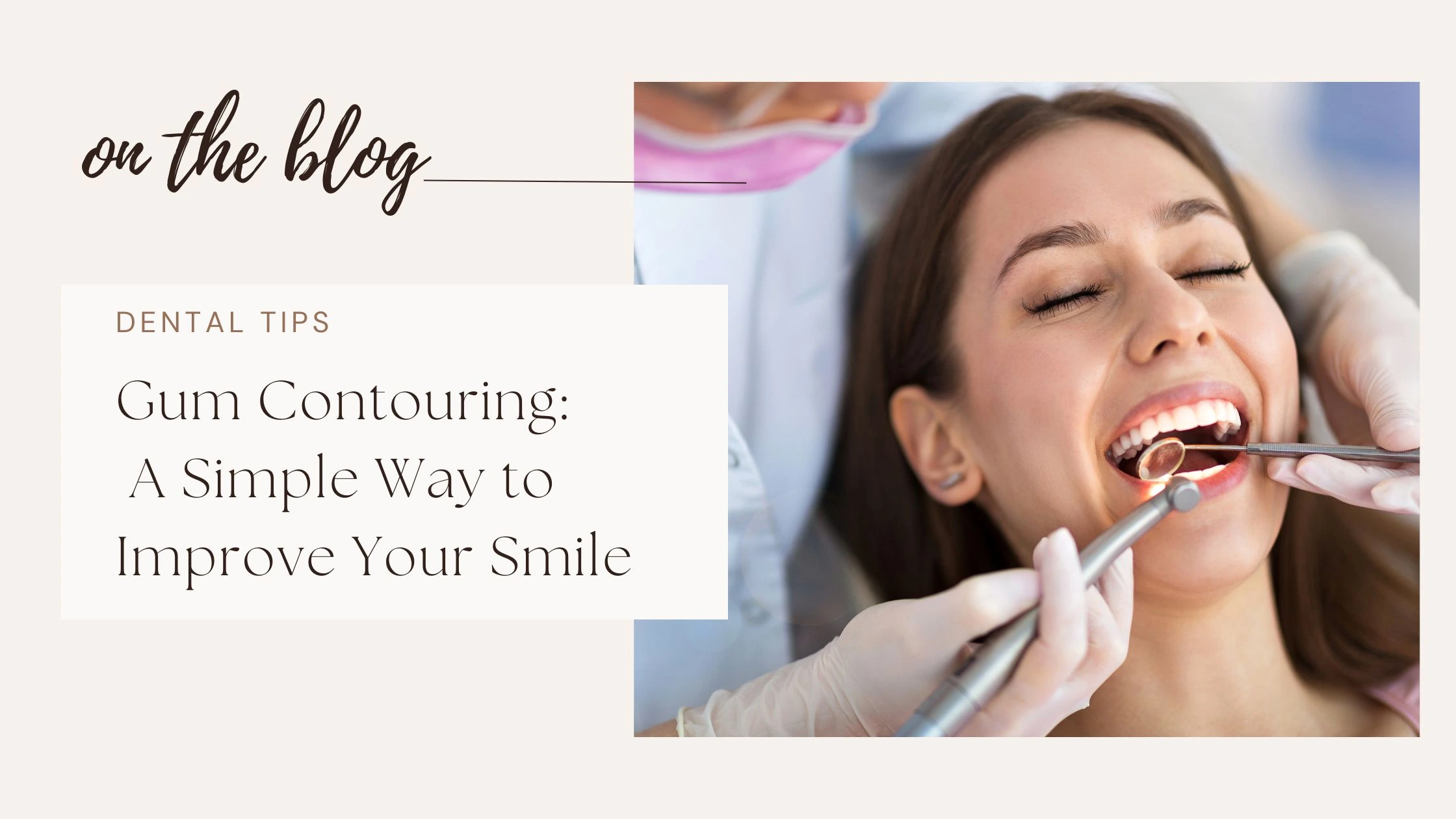
Gum contouring is a cosmetic dental procedure that modifies the shape and appearance of gums to provide an aesthetically pleasing smile.
It involves careful removal or reshaping of the excess gingival tissue.
Gum contouring is considered for cosmetic reasons as well as for functional purposes.
When excessive gum tissue of upper front teeth is visible upon smiling, it is referred as “gummy smile”. This makes the teeth appear smaller than their actual size.
Gum contouring helps to reshape the gum line by removing excess gum tissue and revealing more natural tooth structure, creating a balanced smile and improving smile symmetry.
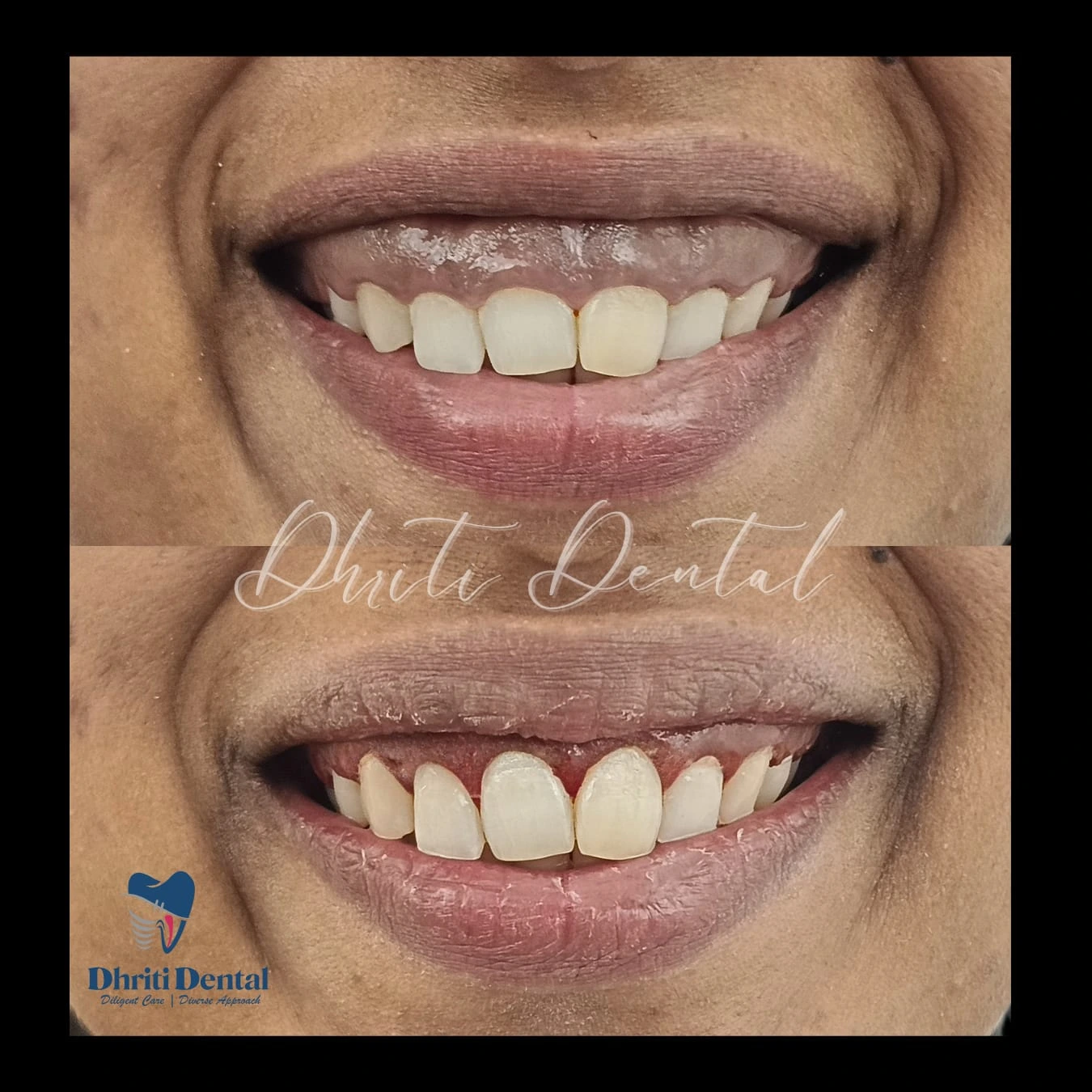
An uneven gum line occurs when there is variation in the height of the gingival tissue around the teeth. This leads to a few teeth appearing longer than others.
Gingival contouring helps to create a more symmetrical appearance.
The causes for uneven gum line are:
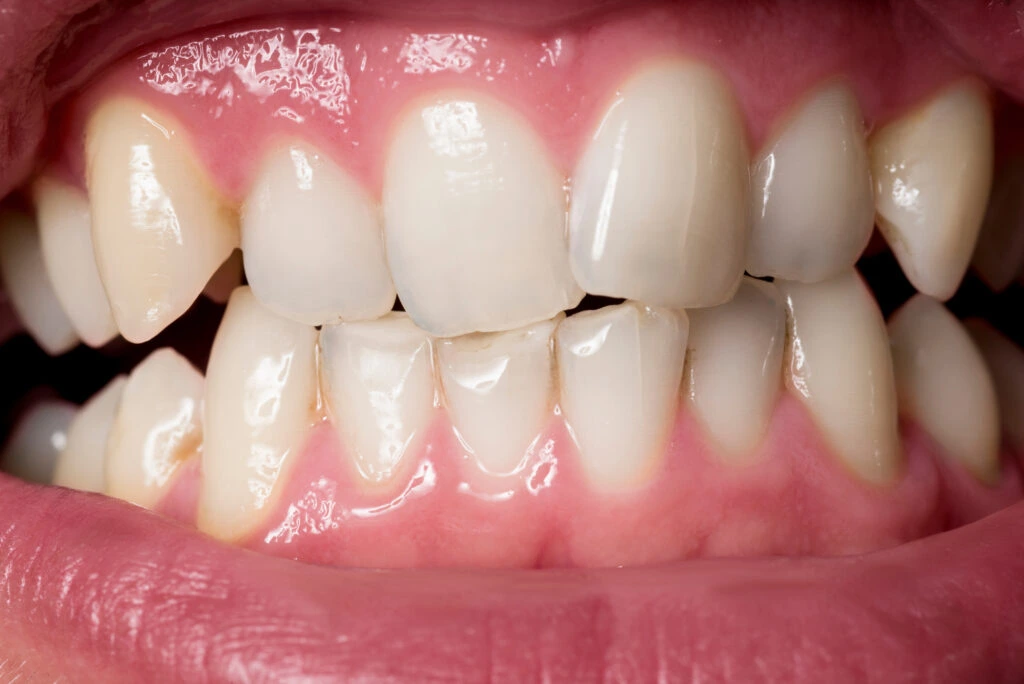
After achieving the desired teeth alignment with orthodontic treatment, gum contouring helps to create a more natural-looking and symmetrical smile.
Gingivectomy is a surgical procedure that involves the removal of excess or overgrown gingival tissue. The procedure helps to restore a healthy gum line, enhancing the aesthetic appearance of the gums and eliminating gingival pockets formed as a result of gingivitis or periodontitis.
Gingivoplasty is a surgical procedure that is aimed at reshaping and contouring the gum tissue to provide an aesthetically pleasing gum line and improve function.
Crown Lengthening is a procedure used to remove the gingival tissue to expose more tooth surface. It is generally recommended when the tooth is decayed below the gum line or when an additional tooth surface is required to support a restoration such as crown or a bridge.
Gum contouring is done to create an even and naturally looking gum line around the exposed tooth.

Pocket reduction surgery, also known as gingival flap surgery, is a procedure to treat advanced periodontal disease by reducing the depth of periodontal pockets. These pockets accumulate plaque and tartar which can lead to infection and bone loss, if left untreated.
There are several techniques available for gum contouring, each with its own advantages depending on the patient's specific needs and the dentist’s recommendation. The choice of method may depend on factors such as the extent of gum reshaping required, the patient's comfort level, and desired recovery time.
This is a traditional method of gum contouring which involves manual removal or reshaping the gingival tissue by using a scalpel. It is performed under a local anaesthesia and may require sutures after the procedure.
Laser gum contouring utilizes focused light energy to remove the excess gum tissue or to precisely reshape the gum line . Laser treatment is a minimally invasive, quick and painless procedure.
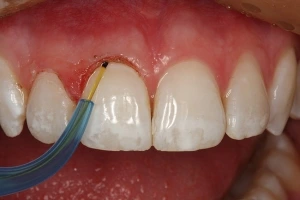
Some discomfort and swelling may occur for a few days after the laser treatment, but can be managed with over-the-counter pain medications.
Electrocautery is a method that uses high-frequency electrical current to remove or reshape the gums.
The electrocautery device has a metal tip that heats up when an electrical current passes through it. This heated tip is used to remove or shape the gingival tissue.
Electrocautery provides a high precision shaping of gums and causes minimal bleeding, as it seals blood vessels while removing the tissue.
It is considered less painful than traditional gum contouring methods.
Gum contouring has multiple benefits ranging from esthetics to functionality, let us look at them :
Gum contouring improves the appearance of the smile by giving it a more balanced and uniform shape, making the teeth appear more proportionate enhancing the smile.
Overgrown or uneven gingival tissue can interfere with proper cleaning. Gum contouring eliminates gingival pockets, provides better access for cleaning the teeth and thereby improving the overall oral health.
A transformed smile can help to positively impact self-esteem and reduce self consciousness.
Poor oral hygiene during recovery may increase the risk of bacterial infection. People with weakened or compromised immune systems are generally at a higher risk.
Local anesthesia prevents pain during the procedure, but after the effect of anaesthesia wears off, swelling or tenderness may occur in the operated area.
The gingival tissue may grow back in some cases and may necessitate additional procedures. This is more common in patients with poor oral hygiene and those on medications like Beta Blockers etc..
Over-removal of the gingival tissue may expose the tooth surfaces, causing sensitivity and other dental problems.
Gum contouring typically requires a single visit and a short recovery time.
The procedure involves the following steps:
A comprehensive dental examination is done to evaluate the gums, teeth and overall oral health. A treatment plan is customized according to the patient's needs and goals.
A local anesthesia is administered to numb the gums, to ensure the patient's comfort throughout the entire procedure.
Using specialised instruments like scalpel or laser, the dentist reshapes the gum line or removes the excess tissue to create a balanced gum-to-tooth ratio.
In a few cases, the bone beneath the gingiva may also be contoured.
Sutures may be placed if significant tissue is removed.
Pressure packs or ice compression are applied after the procedure, to minimize bleeding.
Proper aftercare is essential for quick healing and minimal discomfort.
Gentle brushing and flossing around the area, and rinsing with warm saline water are advised.
Antiseptic mouthwashes may be prescribed.
Localised swelling and tenderness are normal after the procedure on the next day
Pain relieving medicines prescribed by the dentist help to manage symptoms.
Patients are advised to stick to a soft diet and to avoid hot, spicy, or hard foods for a few days to avoid irritation to the treated area.
Patients are advised to avoid vigorous physical exercise for a few days, as increased blood flow could cause bleeding.
Patients are advised to avoid touching the sutures, as it could cause bleeding.
Some sutures are dissolvable; if not, they will be removed during a follow-up appointment.
One or two follow-ups may be required to monitor the healing process and to address any complications.
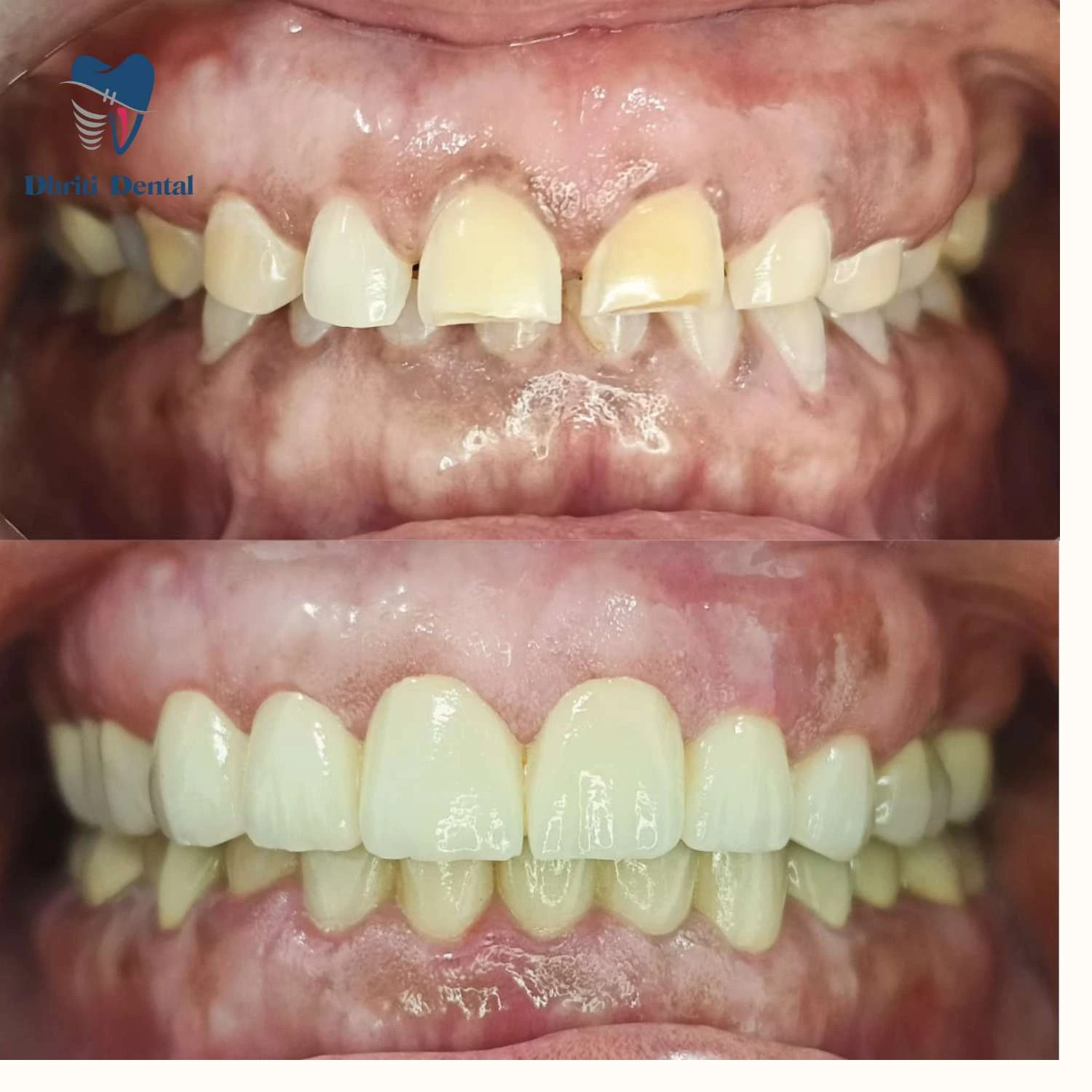
The dentist will administer local anesthesia to numb the area so there should be no pain during the procedure. However, some pain and discomfort may be experienced afterwards, which can be managed with the prescribed pain killers.
Maintain proper oral hygiene with gentle brushing and flossing. Avoid hard, hot or spicy foods that could cause irritation. Follow the dentist’s post-operative instructions and schedule regular check-ups.
The use of laser allows low to minimal bleeding during the procedure, shorter healing duration, and reduced discomfort in comparison to gum surgeries using a surgical blade.
Are you looking for ways to improve your smile? Do not delay and book your next dental check up with our smile experts at Dhriti Dental, Nallagandla and Manikonda branches, Hyderabad.